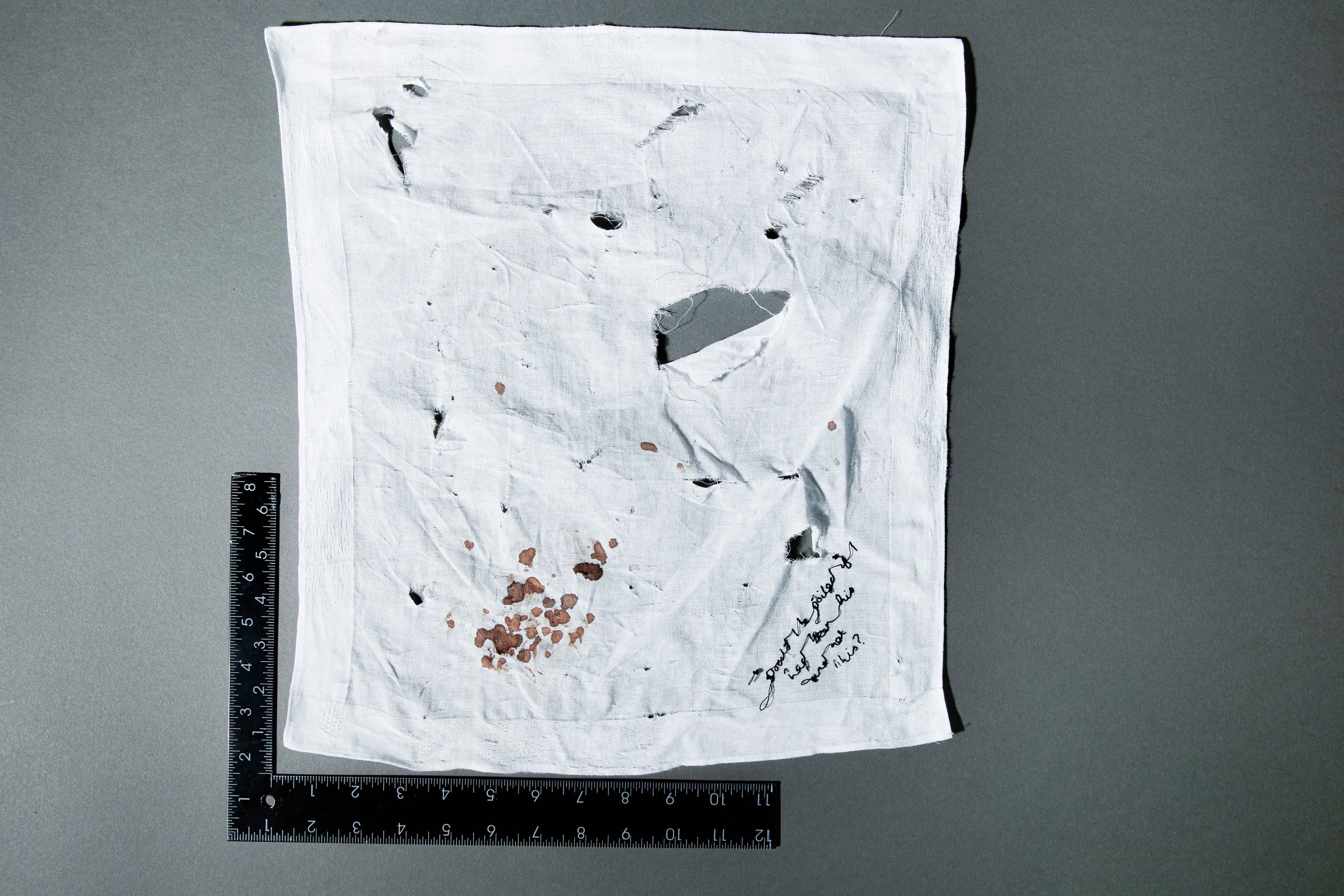1. Would I be soiled if I had been his and not his?
Part 1 of the “Therapeutic” series of essays
“Would I be soiled if I had been his and not his?”, Part of the Therapeutic series 2022, UV printed on foamex, 60cm x 90cm x 0.3cm
What can I tell you of my father, your grandfather? It is too simple to say, “he was a bad man”. I know he did bad things, but I didn’t know him long enough, or well enough, to say that was constitutive of the person he was. It pains me, for your sake, to think that the badness was inherent as opposed to acted-out. What would that mean for you, the inheritance diluted at least by your own father’s blood? What would that mean for me? The intermediary, the transmitter, the host. There are parts of me I can trace directly to him. My cold blue eyes, the paleness of my skin, the paintbrush in my hand.
What can I tell you of my stepfather? You met him of course, not very often, and the meetings were clouded by his illness. You don’t remember him now. But he was a good man. I can say that for sure. Before he started to disappear, before the shakes, the memory loss, the bouts of vicious vitriol… he was good. A good father, a good husband, a good man. What would I have been if I had been his and not the other’s? Would I carry a different pain? Would I have inherited another bad? Perhaps I would not be me at all, and perhaps you would not be you.
The humble handkerchief has been used as a mode of expression in the Western world for hundreds of years. They have been waved to say “goodbye”, dropped to say “come here”, knotted to say “I remember”, given to say “good luck”. Decorative styles could be used to give a new look to an old outfit, particularly when other resources were scarce.
But this handkerchief is not silk or lace, nor coloured or patterned. It is cheap, mass manufactured - it has little value. It is made for practical purposes. To clean, smear, wipe away abject fluids and make the user presentable. To bind the holes in the boundaries, to stop us from leaking out. And once it has done its work, it is secreted away on the person until it has no more use and is thrown away. It is rarely shared. A personal object.
When it is pulled out to cover the mouth or nose as we sneeze, we may say “bless you”. In times past, sneezes were thought to be an omen or warning from the gods, a sign of the plague and requiring god’s intervention to protect us. An even more ancient belief was that a sneeze might accidentally expel the spirit from the body unless prevented. What is the hankie in this context then? A net to capture the spirit and force it back? A more solid but still permeable boundary between the self and the non-self?

